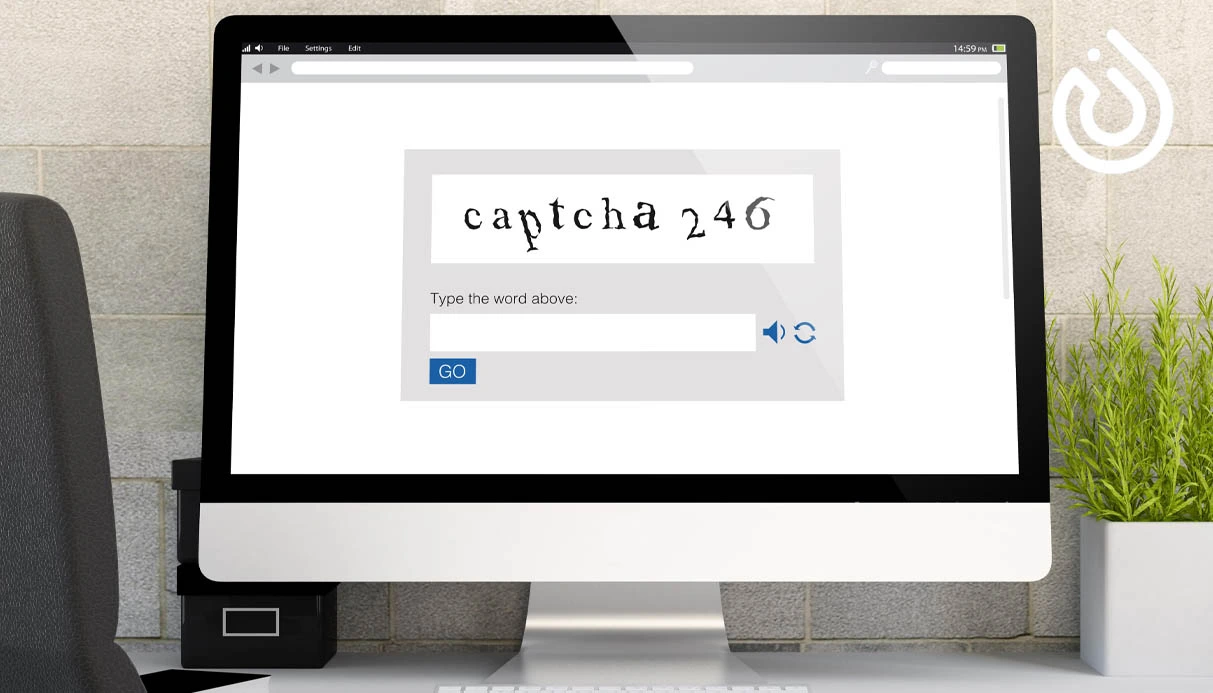.webp)

Last updated: October 19, 2025 — written for ethical, compliant use such as QA testing of your own sites, accessibility support, and fraud-prevention research. Using CAPTCHA solvers on websites you don’t control may violate terms of service and laws in your jurisdiction.
What “any type of CAPTCHA” means in 2025
Modern sites deploy a mix of visual puzzles and risk-scoring defenses. “Any type” typically covers:
- reCAPTCHA v2 (checkbox/invisible) & v3 (score-based), Enterprise variants.
- hCaptcha (standard/enterprise).
- Arkose Labs FunCaptcha (interactive mini-games).
- GeeTest (slider & behavior-based).
- Cloudflare Turnstile, plus AWS WAF CAPTCHA and other provider challenges.
No single vendor can guarantee 100% coverage forever; providers update challenges frequently. What you want is breadth + fast iteration + a fallback path when challenges evolve.
How CAPTCHA solvers work (at a glance)
- Human-in-the-loop marketplaces route snapshots or challenge tasks to workers. They’re widely compatible and resilient to changes. (e.g., 2Captcha, Anti-Captcha).
- AI/ML solvers generate tokens or emulate interaction using trained models—often in 1–3 seconds for popular types, and sometimes “browserless” (token-only). (e.g., CapSolver, CapMonster Cloud).
- Hybrid approaches mix both to balance speed, cost, and coverage. (Common for leading providers).
Most services expose simple REST APIs/SDKs; some offer browser extensions to auto-inject tokens into pages (handy for testers).
Evaluation criteria (read this before choosing)
-
Coverage & freshness: How quickly does the vendor adapt to new or updated challenge formats (e.g., Turnstile updates)
-
Latency & throughput: Do you need tokens in seconds (AI) or is human speed acceptable?
-
Accuracy & retry policy: Look for transparent success rates and free retries on bad tokens. (Rates are vendor-reported; verify in your own tests.)
-
Integration surface: REST, client libraries, Puppeteer/Playwright/Selenium snippets, and browser extensions.
-
Cost model: Per-1,000 tasks vs. subscription vs. pay-as-you-go; consider token-heavy challenges (often priced higher than image CAPTCHAs).
-
Ethical & legal safeguards: Features that help you whitelist your own domains, log consent, and comply with accessibility and privacy rules.
-
Support & uptime: 24/7 support, status pages, and multi-region infrastructure. (Some vendors tout 99.99% uptime.)
The best CAPTCHA solving services in 2025
- Anti-Captcha (Anti-Captcha.com)
Why it stands out: Longevity, broad compatibility, strong uptime claims, and competitive per-task pricing for image and token-based challenges.
Coverage: reCAPTCHA v2/v3/Enterprise, hCaptcha, FunCaptcha, GeeTest, Turnstile, image-to-text.
Pricing & reliability: Public pages highlight low per-1,000 pricing and 99.99% uptime narrative since 2007 (verify for your workload).
Best for: Teams that want a battle-tested API with human + ML options and predictable costs.
Developer experience: Language-agnostic API, community examples, and integrations with common automation stacks.
- 2Captcha
Why it stands out: Massive human workforce and simple API that has existed for years—useful when AI models lag a novel challenge.
Coverage: 30+ captcha types including reCAPTCHA, hCaptcha, FunCaptcha, AWS WAF CAPTCHA, image & audio variants.
How it works: Human-powered by default; straightforward REST endpoints with many SDK examples.
Best for: Max compatibility and predictable handling of long-tail image or audio challenges.
- CapSolver
Why it stands out: AI-first approach with claims of very fast token generation (often 1–3 seconds) and broad coverage including Turnstile and Arkose.
Coverage: reCAPTCHA v2/v3, hCaptcha, FunCaptcha (Arkose), GeeTest, Cloudflare Turnstile, and more.
Best for: High-throughput automation and teams optimizing for latency over human fallback.
Notes: Vendor-reported success/latency numbers should be validated against your target domains.
- CapMonster Cloud (ZennoLab)
Why it stands out: AI speed with a developer-friendly ecosystem, including a Chrome extension and docs for popular headless browsers
Coverage: reCAPTCHA v2/v3/Enterprise, GeeTest, Cloudflare challenges, image-to-text; both cloud and self-hosted routes exist across the CapMonster family.
Best for: Teams that want AI speed plus the option to self-host for data control/cost at scale.
Feature-by-feature comparison
| Vendor | Primary Approach | Notable Coverage | Typical Integration | Extras |
|---|---|---|---|---|
| Anti-Captcha | Hybrid (human + ML) | reCAPTCHA v2/v3/Enterprise, hCaptcha, FunCaptcha, GeeTest, Turnstile | REST API + multi-language SDKs | Longevity, uptime narrative, per-1,000 pricing |
| 2Captcha | Human-in-the-loop | 30+ types incl. reCAPTCHA/hCaptcha/FunCaptcha/AWS WAF | REST API, quickstart samples | Huge worker pool; audio & image support |
| CapSolver | AI-first (token-only & browserless options) | reCAPTCHA, hCaptcha, FunCaptcha, GeeTest, Turnstile | REST/SDK | Fast responses (often seconds), ML-only claims |
| CapMonster Cloud | AI + ecosystem tooling | reCAPTCHA (v2/v3/Enterprise), GeeTest, Cloudflare | REST, plug-ins, Chrome extension | Self-hosted CapMonster app option |
Pricing varies by CAPTCHA type and region. Public references show image CAPTCHAs often priced around $0.5–$3 per 1,000, while token-based (reCAPTCHA/hCaptcha) cost more; always confirm the latest rates on vendor pages.
Implementation patterns (without crossing ethical lines)
- Token-injection workflow
Your test script (Puppeteer/Playwright/Selenium) requests a token from the solver, then injects it into the page and submits. This avoids brittle DOM automation and respects browser sandboxing. (Many vendors document this explicitly.) - Browserless “token only”
Some AI solvers return tokens without spinning up a browser, reducing compute costs for regression test farms. Validate tokens server-side as real sites may couple tokens with environment signals. - Resilience rules
Add retry/backoff, rotate IPs/proxies (for your own domains), and monitor success rates/latency per challenge type to spot provider drift early.
Legal, compliance, and ethics (read carefully)
- Use on your own properties or with explicit permission (e.g., vendor QA, bug bounty, accessibility testing).
- Respect user privacy; avoid capturing sensitive data embedded in puzzles.
- Maintain an allowlist of target domains and sign off internally (DPO/legal).
- For accessibility, consider the site’s official alternatives (audio challenges, support channels) first.
- Keep logs that prove consent and scope for audits.
Scenario-based recommendations
- You need maximum compatibility across legacy and new challenges, and you can tolerate human latency: 2Captcha or Anti-Captcha.
- You need tokens in seconds at scale for automated QA on your staging mirrors: CapSolver or CapMonster Cloud.
- You want a browser plug-and-play tool for manual test sessions: CapMonster Cloud Chrome extension.
- You need self-hosting (data control/cost optimization): CapMonster (self-hosted) with optional cloud burst.
Benchmarks you should run yourself
- Cold & warm latency by type (reCAPTCHA, hCaptcha, FunCaptcha, GeeTest, Turnstile).
- Success rate across 100–1,000 trials per type (track invalid/expired tokens).
- Cost per solved CAPTCHA in realistic traffic mixes.
- Resilience to provider changes (retest weekly).
- Error taxonomy (sitekey mismatch, token expired, site risk-score blocks).
Independent blogs and vendors publish claims (e.g., seconds-level solves, high success rates), but your domain and your risk signals are unique—treat public numbers as starting hypotheses.
The final verdict: the “best” depends on your use case
- Choose Anti-Captcha or 2Captcha when compatibility and human backup are paramount.
- Choose CapSolver or CapMonster Cloud when speed and automation scale dominate your requirements.
Build a small A/B benchmark harness, measure your real latency/accuracy/cost across the CAPTCHA mix you face, and keep a secondary provider configured as failover. This dual-vendor strategy is the most dependable way to “solve any type of CAPTCHA” as formats evolve throughout 2025.
Conclusion
CAPTCHA solving has matured into two reliable archetypes—human-in-the-loop platforms with broad coverage and AI token services with low latency. The pragmatic path is to benchmark both, keep failover providers, and enforce strict compliance rules limiting use to authorized domains (your sites, your tests, and accessibility contexts).
.jpg)
.webp)

